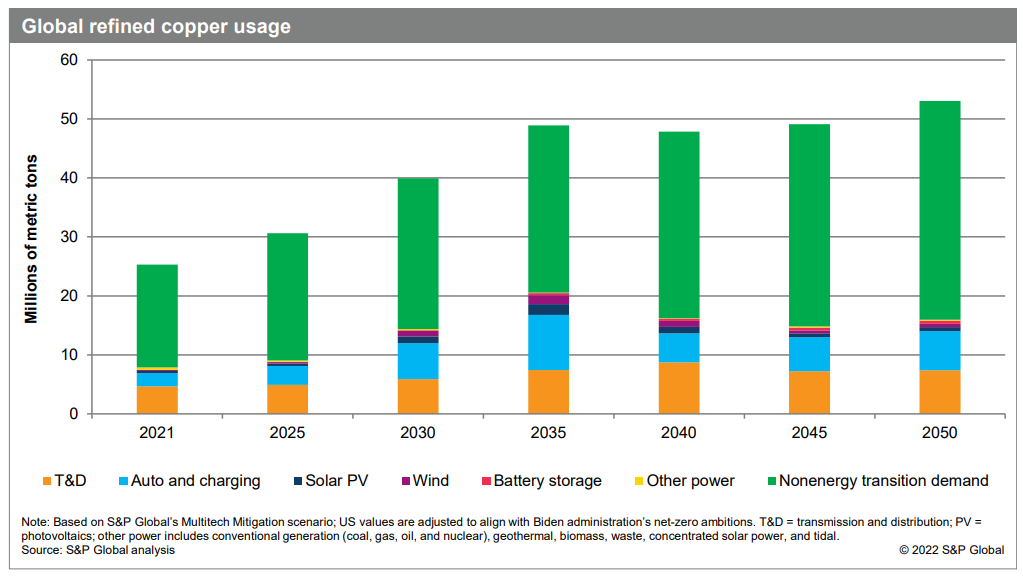
Time for a thread on large scale #copper expl/dev companies.
There is no good way of comparing these simply, so let me start out the thread with size and EV/lb multiple and we go from there.
$ASCU.TO $ATX.V $OCO.V $SURG.V $FDY.TO $REG.V $HCH.V $DNT.TO $ALDE.V $SLS.TO
1/n
There is no good way of comparing these simply, so let me start out the thread with size and EV/lb multiple and we go from there.
$ASCU.TO $ATX.V $OCO.V $SURG.V $FDY.TO $REG.V $HCH.V $DNT.TO $ALDE.V $SLS.TO
1/n

$WRN.TO $NGEX.V $LA.V $MUX $SOLG.TO.
When listing the companies by EV/lb multiple it is easy to be fooled. Some look super cheap and present +5x return opportunities and some are "value traps".
How do we determine which companies present opportunities and which doesn't?
2/n
When listing the companies by EV/lb multiple it is easy to be fooled. Some look super cheap and present +5x return opportunities and some are "value traps".
How do we determine which companies present opportunities and which doesn't?
2/n

Look for:
1. Proven management teams with strong backing and good share structures.
2. Project quality and potential buyers.
3. Do majors think the asset can be developed?
4. Is the potential reward worth the risk?
5. Catalysts / events that will narrow the valuation gap.
3/n
1. Proven management teams with strong backing and good share structures.
2. Project quality and potential buyers.
3. Do majors think the asset can be developed?
4. Is the potential reward worth the risk?
5. Catalysts / events that will narrow the valuation gap.
3/n
1: It often takes 5-10 years to drill out and derisk a project. In that time frame most companies screw things up often costing their shareholders a lot of money. Investing alongside teams that has put REAL $ into the company and has a track record of selling similar projects
4/n
4/n
is a good start. A real sickness of this industry is to blow out share structures at the bottom of a cycle leaving existing shareholders in a bad spot. Make sure the team has strong backing by groups with similar interest as yourself. Having majors as strategic shareholders
5/n
5/n
is great, but remember they want the project as cheap as possible. If your company isn't backed by strong people to offset that there is a good chance major miners will buy the project cheaply or you will sit in a value trap for years.
6/n
6/n
2: If the goal is to sell the project to a major the project need to have a certain quality. If the project is (or will be) large enough then start to look at things such as grade, strip ratio, infrastructure, recovery factors (CuEq numbers vary a lot from real life),
7/n
7/n

access to water etc.
If the project is located in South America, you can get a feel of what size/grade is required to be of interest to a major here. Keep in mind some of the "red" projects have problems otherwise they would probably already be in production.
8/n
If the project is located in South America, you can get a feel of what size/grade is required to be of interest to a major here. Keep in mind some of the "red" projects have problems otherwise they would probably already be in production.
8/n

Being located in a brownfield setting often helps a lot in terms of infrastructure, workforce, permitting and potential buyers. However, the project must interest more than 1 potential buyer to generate the return we're looking for. Be careful with companies
9/n
9/n
having a weak share structure and 1 strong major miner with a serious toehold. The major tend to have more patience than retail investors.
Also, be careful with companies not having any serious investors involved. The copper story is not new and good projects are known.
10/n
Also, be careful with companies not having any serious investors involved. The copper story is not new and good projects are known.
10/n
3: A good mining country doesn't exit. Unfortunately, you need to look at projects on a region/project basis to get a feel whether the asset can be developed or not. This is time-consuming and often no one knows the answer until the project is approved/rejected.
11/n
11/n
You need to remember it is the majors that need to think the project can be developed and not you. Therefore, filter out the noise and look at where they are operating/investing. Also, don't forget the Chinese. They will be buying in Africa/South America and not Canada/USA.
12/n
12/n
4: Investing in these type of companies is risky business and time-consuming. If I don't see a very good chance for a >3X return in 3 years, I definitely wont invest. Simply not worth the risk. Determining the potential value of the individual project is hard, even after
13/n
13/n
economic studies are presented, due to all the factors mentioned above. Add then the uncertainty about the copper price, recession fears, the entrance of new market participants with deep pockets etc.
14/n
14/n
5: The difference between buying cheap and undervalued stories vs buying value traps sometimes boil down to likely catalysts/events that will narrow the valuation gap within the next 1-3 years. When the copper price is the main catalyst for a story I'm aren't interested.
15/n
15/n
Further exploration potential, change in district setting, and derisking through further studies qualify as catalysts/events. However, be careful when "derisking through further studies" is the single catalyst and the company isn't incredibly cheap.
16/n
16/n
To summarize, I believe only a handful of the 15 companies in the junior basket are worth investing in despite most look cheap using a simple EV/lb multiple. Herein lies the beautiful opportunity to both make 5-15X your money and/or loose your shirt the next 2-3 years.
17/END
17/END
• • •
Missing some Tweet in this thread? You can try to
force a refresh








